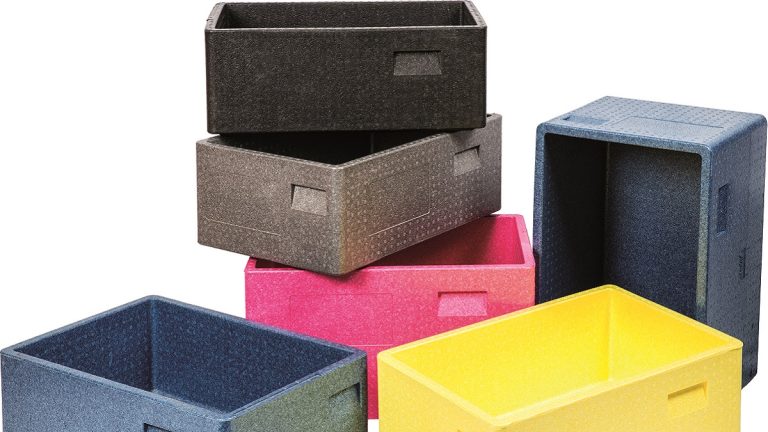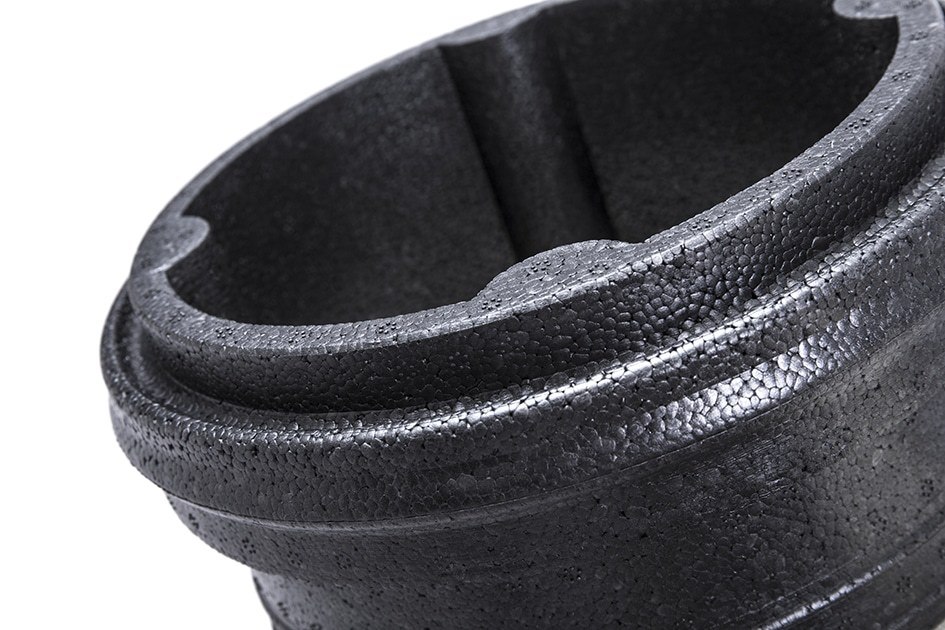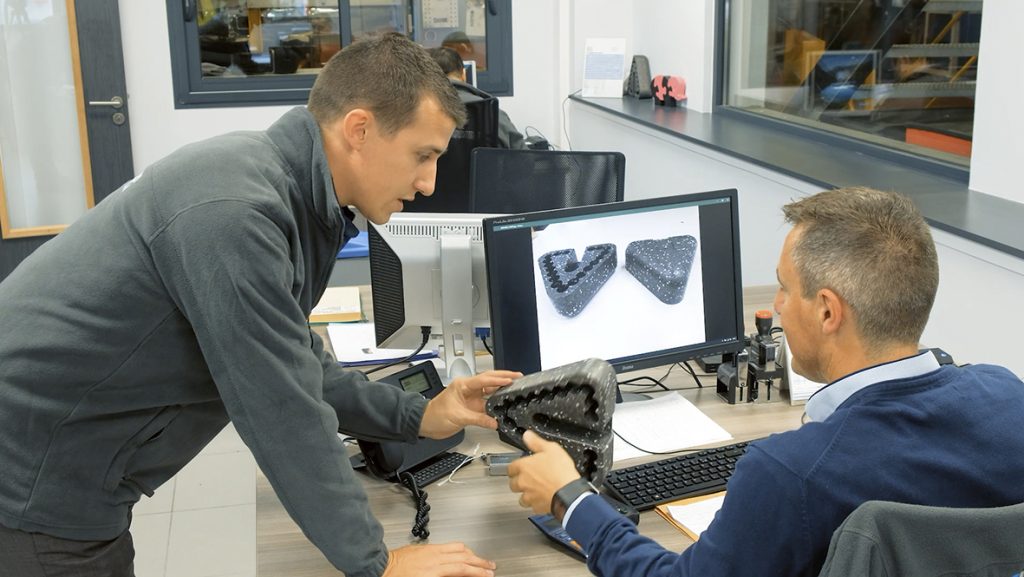The European Green Pact and ESG strategies call for bold commitments to reduce the environmental footprint. Reducing packaging waste with expanded foams is one of the levers to achieve this.
Introduction to the environmental impact of packaging and the need for sustainable solutions
Europe generates 80 million tonnes of packaging waste per year. Plastic waste accounts for 19.4%. The latest figures available from Eurostat invite us to reflect on the urgency of moving from a linear to a circular packaging model.
While in the linear model, packaging grows non-stop and produces non-stop waste, the circular packaging model ensures that logistical growth does not result in an increased waste.
The data of the study corresponds to the waste generated between 2009 and 2020. It is more than likely that the impact of the Directive (EU) 2018/852 will continue increasing in the upcoming years thanks to regulatory measures towards a circular economy. They include, among others, reuse, recycling or eco-design to lighten packaging.
The goal of zero waste packaging is not a utopia. It is only necessary to keep in mind the whole packaging life cycle and its management, to apply ecodesign criteria and to choose those materials that best contribute to waste reduction. Of course, without compromising the shipment security.
This is where expanded foams such as expanded polystyrene (EPS), expanded polypropylene (EPP) and expanded polyethylene (EPE) become a great asset for sustainable packaging solutions.

How to use expanded foams to reduce packaging waste?
Expanded foams are ‘green packaging’ options, a term that has been abused and which we prefer to replace with ‘environmentally friendly packaging’.
These solutions enable the following strategies for packaging optimisation and waste reduction:
-
Eliminate overpacking
The risk of breakage due to impacts or constant vibrations during handling and transport has for years fuelled the overprotection of goods with excessive packaging. Expanded plastic foams, due to their excellent capacity to absorb impacts, allow packaging to be designed to meet the needs of each product.
-
Personalised packaging
One of the most useful qualities of EPP and EPS (and its renewable alternative, NEOPS®) is their high mouldability, which allows packaging to be produced in multiple shapes, sizes, colours and interior layouts.
Our ID Lab teams apply eco-design criteria to propose customised packaging solutions according to the needs of each product.
Thanks to our collaborative design system Total Pack System, we can adjust the size, shape and interior distribution of the packaging to each product, prototype and agree with the customer on optimised solutions for each case. Or reduce thicknesses and volumes where overprotection is not necessary.
All these adjustments result in a reduction of waste at the end of the packaging life cycle.
-
Reusable and returnable packaging
In its Annex II, Directive 2018/852 calls on Member States to implement measures to encourage the use of reusable packaging. EPP packaging has excellent resistance to washing (including industrial washing). At the end of a cycle of use, it is sufficient to wash it and put it back into circulation for a new use.
This is the life cycle of our KOMEBAC® enclosures, designed to withstand repeated use without losing their insulation capacity. Those commonly used to transport parts in the automotive industry can last up to 10 years.
In other words: a decade without generating plastic waste.
-
Use recycled materials
The current European regulatory framework stipulates that by the end of 2025, 50% of the weight of plastic packaging must come from recycled material. By 2030 it will be 55%.
With this policy, the European Commission supports recycling in the Old Continent. Both EPP and EPS are recyclable and easy to reintegrate into new products providing circularity solutions.
-
Mono-materials and recyclables
Mono-material packaging (like EPS and EPP packaging) is easy to recycle mechanically. Thus, we close the virtuous circle of sustainable packaging.
This is why eco-design is so important: the end-of-life cycle must be taken into account in order to choose mono-material packaging wherever possible.
-
Waste control in the factory
We cannot overlook the fact that waste is also generated at the production stage. Hence the importance of having suppliers that implement measures to contain and reintroduce pellets into the production process.
Since 2016, Knauf Appliances has been implementing pellet containment measures in our plants. Seven years later, many of our plants are already Operation Clean Sweep certified, which guarantees that this waste is not discharged into the environment and is reused as new raw materials.
Benefits of using expanded foams for packaging (including cost and weight reduction)
Incorporating sustainability criteria into packaging often generates a lot of friction between logistics, sustainability and finance. Some prioritise the reduction of greenhouse gas emissions: for others, the priority is to ensure the integrity of goods throughout the supply chain.
All this, at the lowest possible cost. It is even better if the packaging is visually appealing and enhances the brand image, as recommended by marketing managers.
Packaging with expanded foams in EPP and EPS meets the expectations of all these departments.
Using expanded foams for packaging reduces raw material costs, enables fast and low-cost manufacturing, and provides cushioning, thermal insulation and space optimisation.
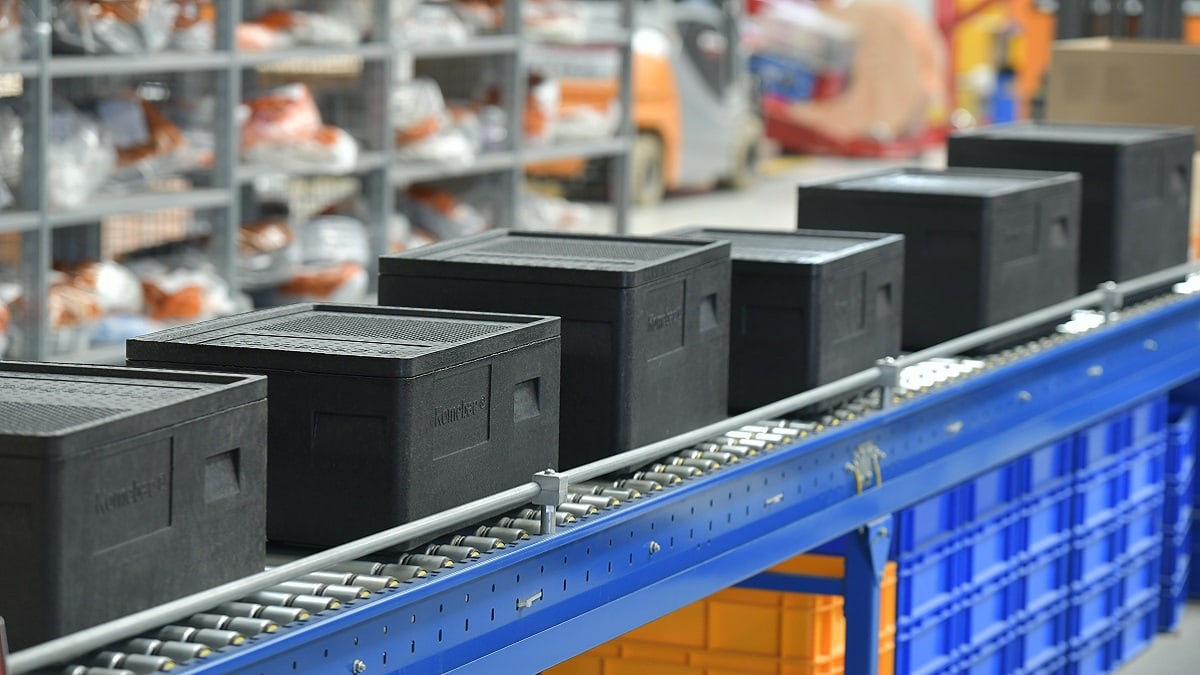
Lower raw material costs
It is common sense: if raw materials are purchased by weight, using lightweight packaging materials allows for reduced packaging costs. But there’s more: reducing the weight of the packaging also translates into a significant reduction in transport costs.
The latter is of particular interest in view of rising fuel prices and fuel price volatility, a factor that always adds uncertainty when budgeting annual logistics costs.
Fast and more cost-effective production
Injection moulding with EPP and EPS foams makes it possible to produce energy-efficient packaging easily, quickly and cost-effectively.
In case of short production runs or immediate needs (e.g., a limited collection of a product with the image of Madonna, Rosalia or the artist in fashion at the time), EPE inner combs can be added per cut.
Maximum protection
For the equation to work, these lightened materials must also be strong enough to provide the same protection with less raw material.
EPS, and especially EPP, are excellent protective packaging materials due to their mechanical strength and shock and vibration damping capacity. This protects the goods from careless handling, bumps in the road or an unfortunate fall.
High insulation
These expanding foams consist of circular cells with 98% air inside. This structure provides high thermal insulation.
In addition, they have a certain porosity that prevents moisture from condensing inside the packaging, even when closed for long periods of time.
Space optimisation
Stackable primary, secondary and tertiary packaging solutions can be developed to maximise space utilisation in warehouses and transport.
It is another way to save on transport and storage costs, thereby reducing the carbon footprint of the packaging and associated processes, without compromising the integrity of the boxes.
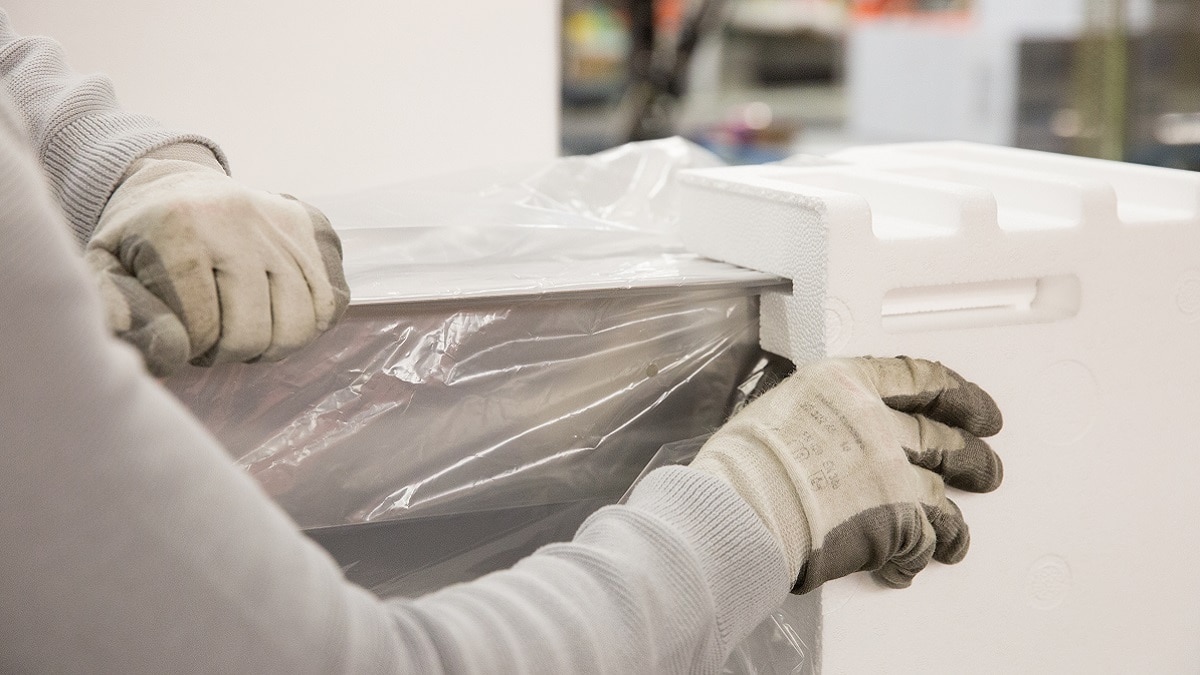
Specific applications of expanding foam packaging in various industries
The electronic components industry, the pharmaceutical industry and the food industry are three of the industries that make the most of EPS and EPP packaging features.
In the first case, electronic equipment and components, which are very sensitive to impacts and humidity, benefit from the absorption of possible shocks or vibrations and from the absence of condensation inside.
Pharmaceutical and other bio-health sectors take advantage of the isothermal capacity of these packs. In particular, for the transport of thermolabile medicines, biological samples and vaccines, when refrigerated transport is not available.
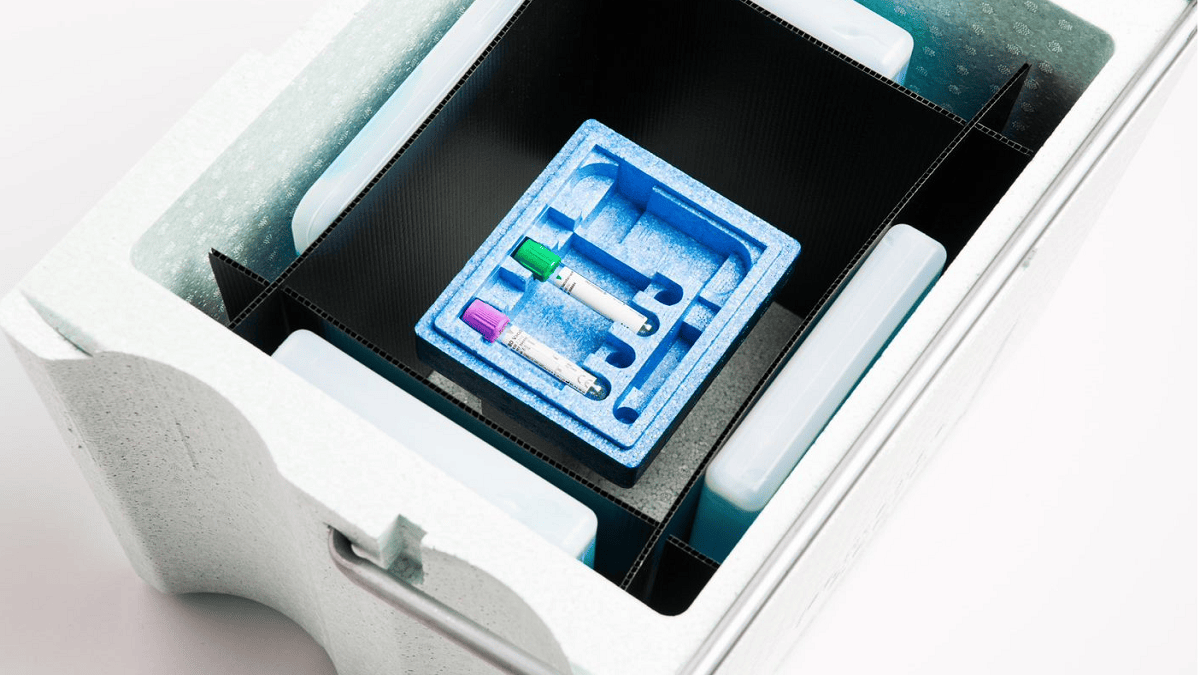
In the food industry, freshness is a must. Thermal insulation and the possibility for the food to breathe without moisture condensation inside the packaging prevent premature rotting. Without a doubt, a valuable ally against food waste.
Comparison of expanding foams and other packaging materials in terms of sustainability
Expanded foams have significant environmental advantages in terms of energy and material resource efficiency, product protection, reusability and recyclability.
-
Energy efficiency
They allow fast and efficient mass production, are lightweight, require less fuel for transport and are easy and cheaper to recycle mechanically than other processes.
-
Optimisation of material resources
Being 98% air, less material is required compared to other packaging raw materials to provide identical protection and cushioning.
-
Guard
They offer high cushioning by themselves without losing their lightness, nor needing to add other materials.
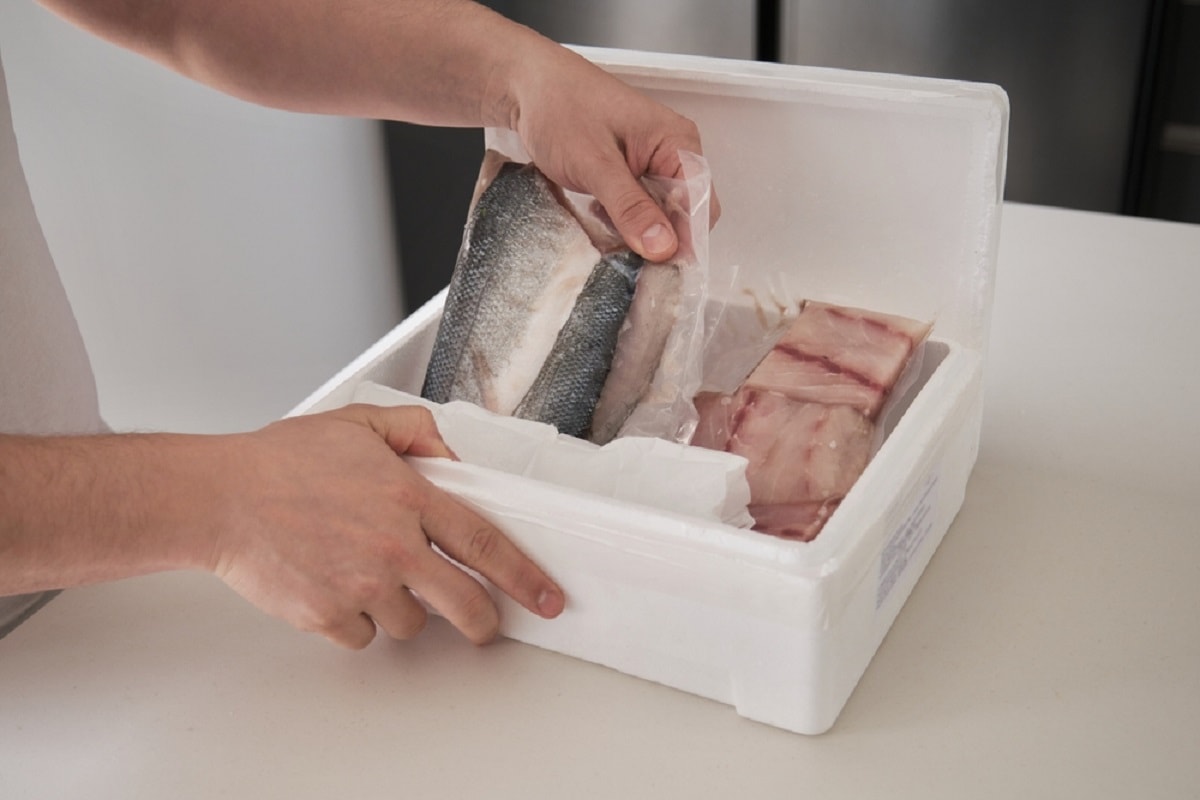
-
Reuse
The EPS packaging can be reused on a personal basis. PPE is washable and returnable with a long reuse cycle if properly treated.
-
Recyclability
Recycling of expanding foams is simple and low cost. Correct management of packaging waste, as well as pellet waste, allows its reintroduction as raw material in new production cycles.
Practical evidence throughout the life cycle shows that expanded foams, EPP and EPS, can be considered as environmentally friendly packaging materials. Thanks to them, we have high-value packaging solutions for industry that fit the requirements of a circular economy like a glove.
